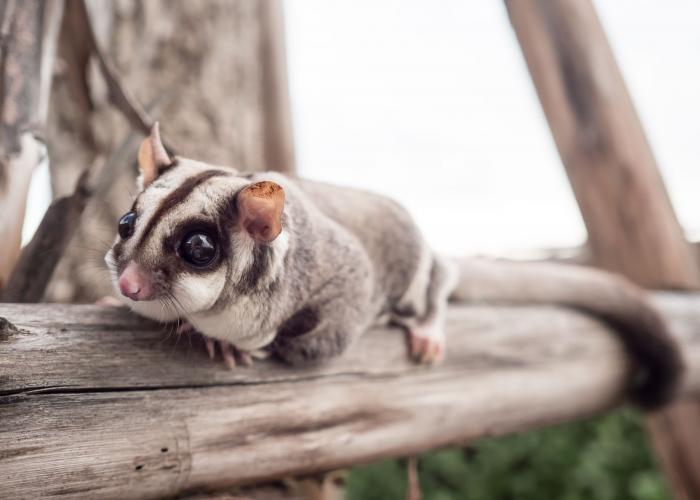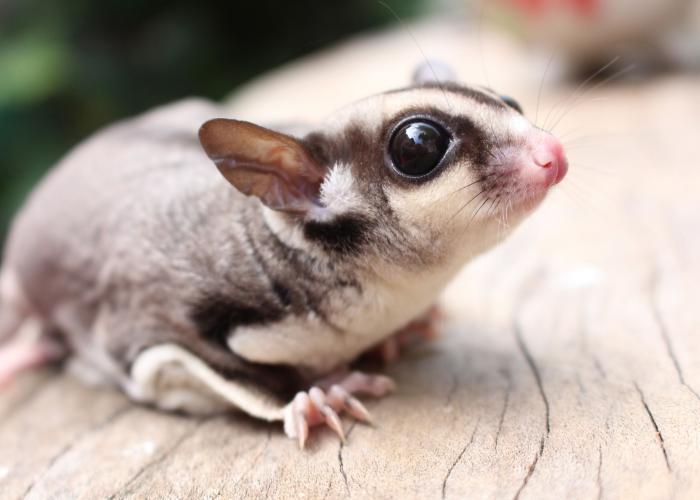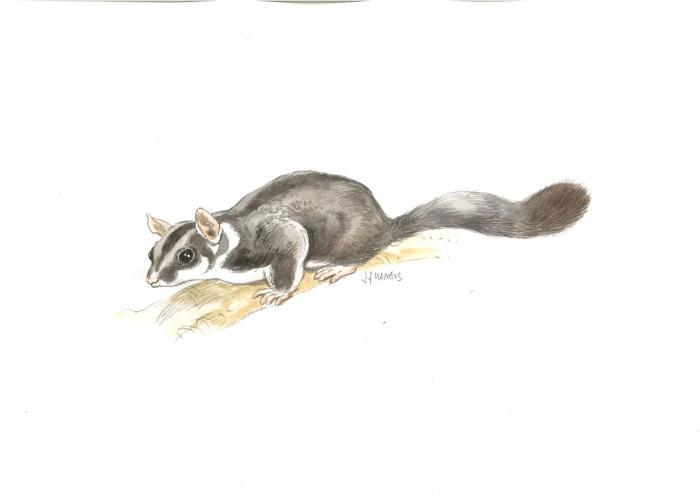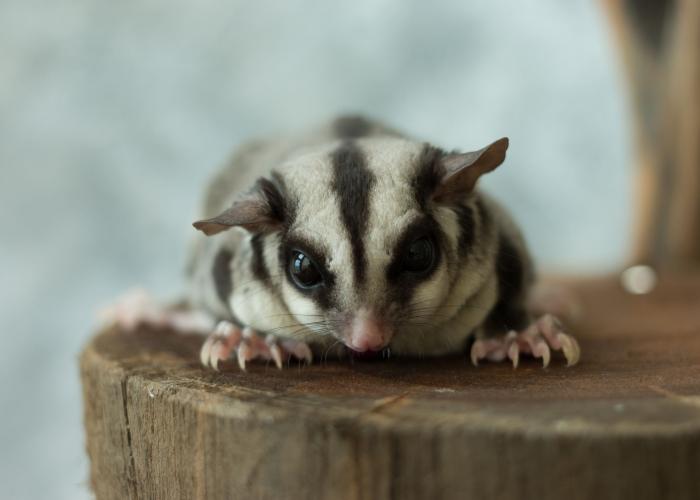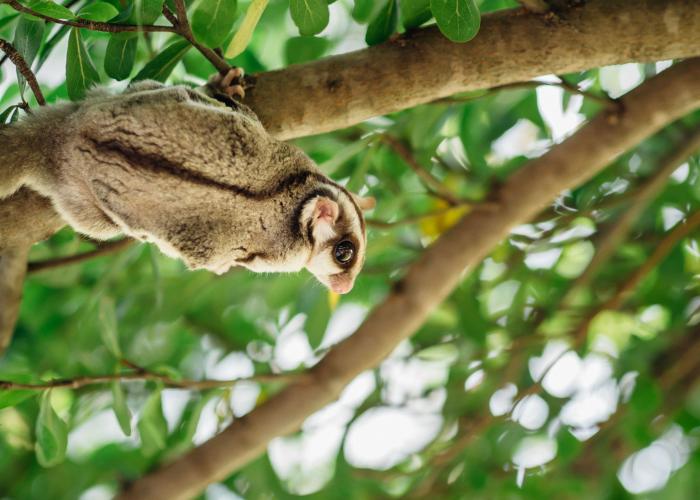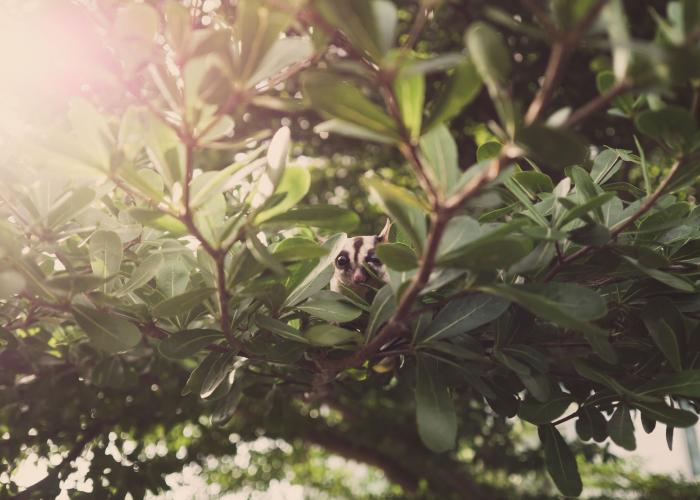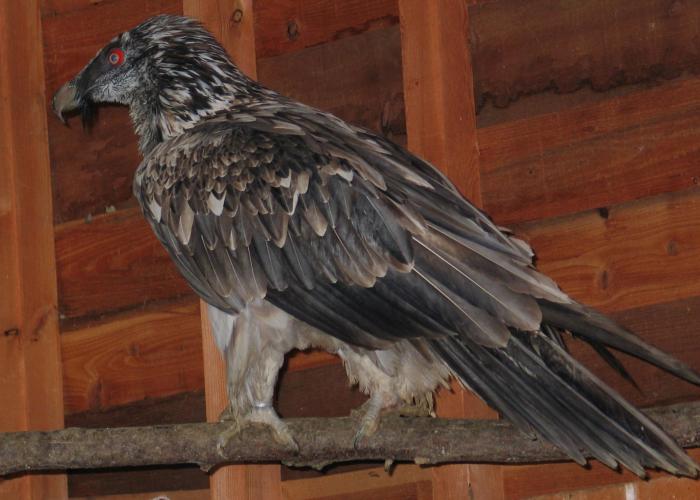Sugar Glider
He glides from tree to tree to feed and protect itself
The Sugar Glider is a small marsupial measuring 30 cm from nose to tail and weighing 100 to 150 g. It lives in groups in the forest canopy, gliding from tree to tree for food or to escape from its predators. To glide, it has two membranes between its front and rear legs; by flinging itself into the air, it extends its limbs and therefore deploys an aerodynamic surface the size of a large handkerchief, allowing it to glide for over 50 m!
The Sugar Glider is omnivorous: it feeds on insects, fruit, seeds and eggs but loves nectar and other sugary juices, hence its nickname “sugar glider.” This animal is active at night: it has two black eyes which are quite far apart, giving it excellent triangular vision. This is very useful for judging the distance to the trees it springs towards. Being a marsupial, the female has a pouch in which its young continues to grow. Unusually, the males help to protect and rear the young.
A less threatened species
- Name: Sugar Glider
- Latin name: Petaurus breviceps
- Origin: North and east of Australia, New Guinea and surrounding archipelagos, Tasmania
- IUCN status: Least concerned
- Cites: --
